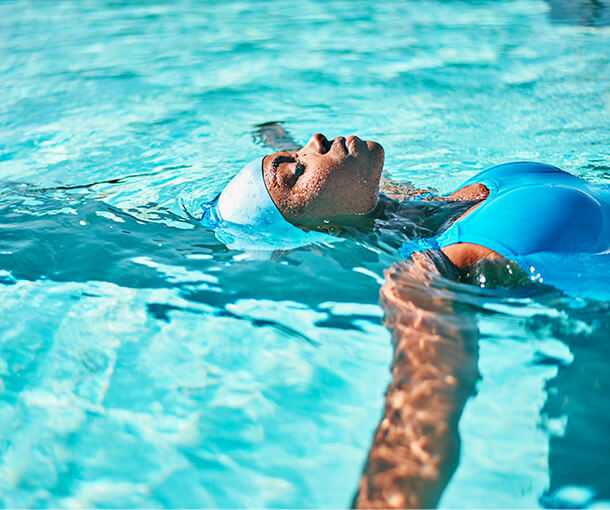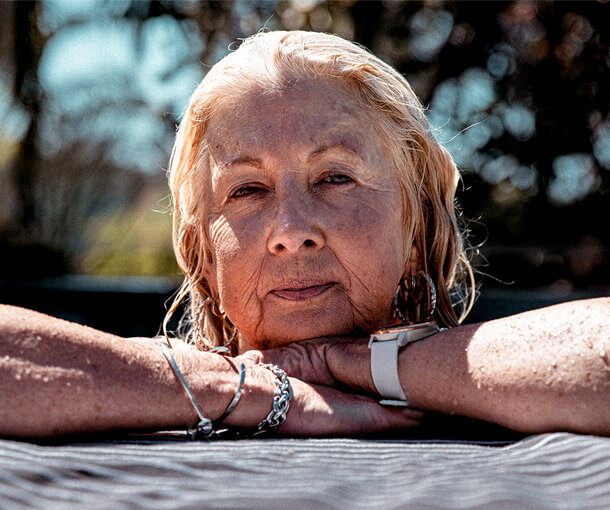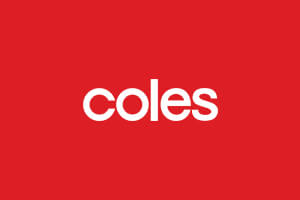If you are at risk of osteoporosis, knowing your bone density could be the first step towards improving your bone health for a full and active life. And if your GP refers you, all it takes is a simple scan. Find out what it involves.
3 things you need to know about bone density scans
- DXA scans are the best way to diagnose osteoporosis. Your GP will assess your risk of osteoporosis, and refer you for a scan if needed. Knowing your bone density can help you identify the best actions to keep your bones strong.
- DXA scans are quick and painless, and are available at most medical imaging facilities and some hospitals.
- Other bone density tests, such as heel ultrasounds (sometimes offered at pharmacies and shopping centres), are not recommended for diagnosis of osteoporosis.
How is osteoporosis diagnosed
People with osteoporosis1 have very low bone density. Bones become weak and fragile – and may easily fracture.
Osteoporosis usually does not have any symptoms until a fracture, which is why it is often referred to as a ‘silent disease’. It is diagnosed by a health professional through a combination of tests and medical history1:
- Your doctor will discuss your risk factors for osteoporosis, and may refer you for a bone density test (called a DEXA or DXA scan)
- Your doctor may also measure your height, and order an x-ray (to check for existing fractures) and blood tests (to see if you have any medical causes for osteoporosis)
A bone density (DXA) scan will tell you whether you have normal bone density, low bone density, or osteoporosis.1
What is a bone density (DXA) scan?
- A bone density (DXA) scan is a simple scan that measures the density of your bones, usually at the hip and spine.1
- DXA is short for ‘Dual-energy X-ray Absorptiometry’. DXA scans are widely available in most medical imaging facilities and many hospitals in Australia.1
- DXA machines use a small amount of X-ray radiation (one tenth the amount used for a chest X-ray) to measure your bone density.1
- The scans are quick and painless. They usually take about 15 minutes. You simply lie back on a padded table and keep still while the arm of the machine passes over your body. You don’t usually need to change into a special gown.2
Who might need a bone density scan?
A doctor will recommend you have a bone scan if you need one. Men and women aged over 50 may benefit from a bone density scan if they have risk factors for osteoporosis. Knowing your bone density will help your doctor manage your bone health and recommend actions to keep them strong.3
Why is my doctor recommending I have a bone density scan?
Looking after your bones can help you live a full and active life. If you are at risk of osteoporosis, it’s best for your doctor and you to find out your bone density as early as possible, so that the right steps can be taken to keep your bones strong. 3
What can I expect at a bone density scan?
A DXA scan:
- takes about 15 minutes2
- is simple, painless and requires no needles
- no preparation is needed
- there is usually no need to get undressed, although belt buckles or metal buttons may need to be removed from the scanning area2
3 interesting facts about bone density scans
- The entire procedure is non-invasive, painless, and generally takes less than 20 minutes. Because there’s no tunnel as with an MRI machine, claustrophobic people don’t need to worry.2
- DXA scans can also measure body fat percentage and muscle mass, as well as bone density.2
What are my bone density scan results?
- Your doctor will receive your results and explain them to you.
- The scan results are used to diagnose whether you have osteoporosis, low bone density or normal bone density.1,3
- Your diagnosis will determine what action your doctor will recommend for you.
Disclaimer: This article is meant for information purposes only. Please consult your health professional if you have further concerns or questions related to bone density scans. References available on request. (will be visible on website)
MAT-AU-2401871
REFERENCES:
1. Healthy Bones Australia. What you need to know about osteoporosis. Consumer Guide. 4th Edition 2017.
2. National Health Service (NHS) UK. Website. Bone density scan (DEXA):How it is performed. Available from www.nhs.uk/conditions/dexascan/what-happens. Accessed December 2019.
3.Healthy Bones Australia. Diagnosis. Available form Diagnosis – DEXA Scan – Bone Density Scan (healthybonesaustralia.org.au). Accessed October 2024.







